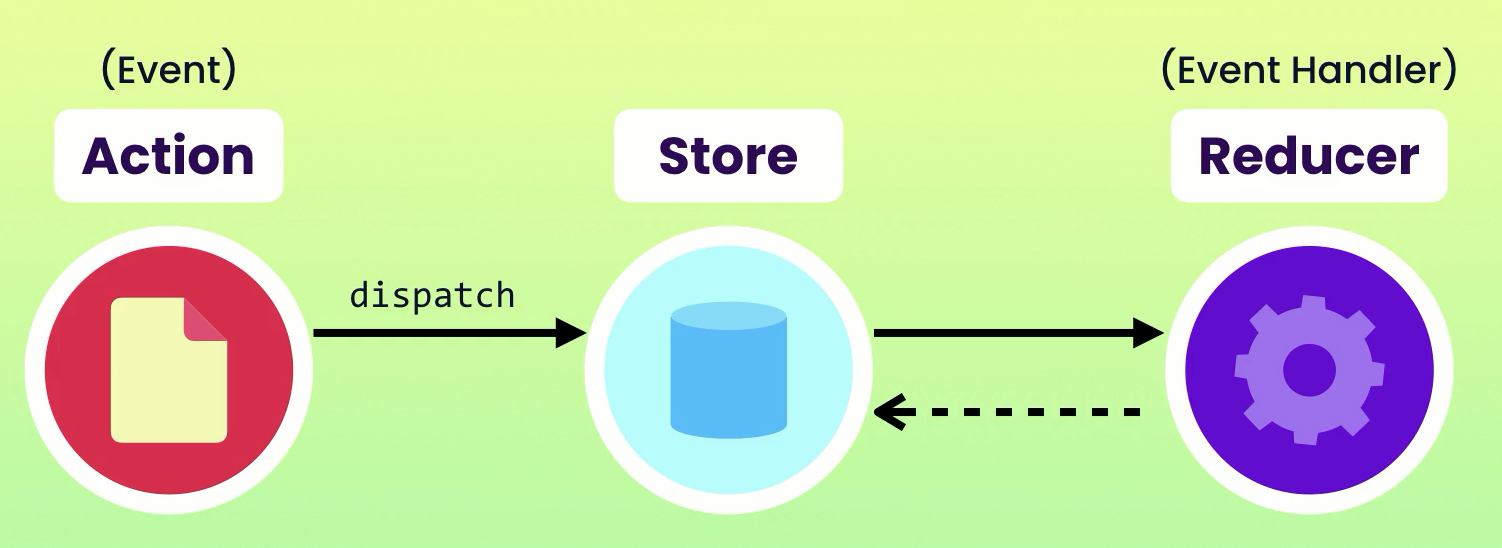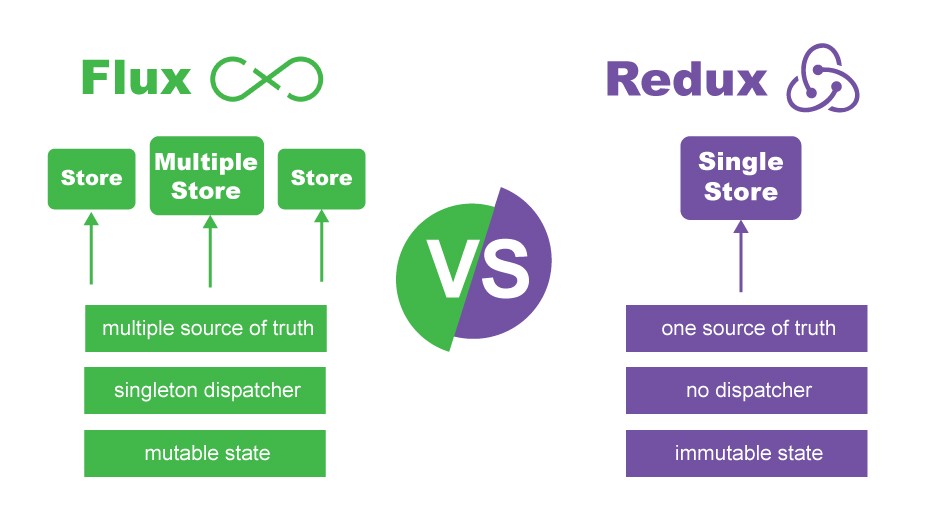- Redux Atchitecture
- Pros
- Cons
- When not to use REDUX
- Flux vs Redux
- 16 useful TypeScript and JavaScript shorthands to know
- Functional Programming
- Predictable state changes
- Centralized state
- Easy debugging
- Preserve page state
- Undo/redo
- Ecosystem of add-ons
- Complexity
- Verbosity
- Tight budget
- Small to medium-size apps
- Simple UI/data flow
- Static data
- You Might Not Need Redux by Dan Abramov
// javascript
function add(a) {
return function (b) {
return a + b;
};
}
const add2 = (a) => (b) => a + b;
add(1)(3);
add2(1)(4);A ‘Pure function’ is a function whose inputs are declared as inputs and none of them should be hidden. The outputs are also declared as outputs.
Pure functions act on their parameters. It is not efficient if not returning anything. Moreover, it offers the same output for the given parameters
- No random values
- No current date/time
- No global state (DOM, files, db, etc)
- No mutation of parameters
function func(a, b) {
return a + b;
}- It always returns the same result if the same arguments are passed
- It never depends on any state/data/change during the execution of a program
- It always returns something
- Here, writing test cases will be straightforward
- Self-documenting
- Easily testable
- Concurrency
- Cacheable
- Changing the internal state of any argument which has been passed
- It may take effect without returning anything
- Writing test cases will be a bit complicated as there may be side effects
- Array.map()
- Array.reduce()
- Array.filter()
- Array.concat()
- ... (spread syntax, which is mostly used to create copies)
- Array.splice()
- Array.sort()
- Date.now()
- Math.random()
Immutable Data means that you should easily able to create data structures instead of modifying ones which is already exist.
const person = {
name: "Sakib",
address: {
country: "Bangladesh",
city: "Dhaka"
}
};
const updated = {
...person,
address: {
...person.address,
city: "Khulna"
},
name = "Hasan"
};
console.log(person);- immer
- immutable
- mori
here when we are modifying object, we are not directly changing it. We first copy and create new object then modify the new object
- Predictability
- Faster Change Detection
- Concurrency
- Performance
- Memory overhead
- Design the store
- Define the actions
- create reducer
To change something in the state, you need to dispatch an action. An action is a plain JavaScript object (notice how we don’t introduce any magic?) that describes what happened. Here are a few example actions:
{ type: 'ADD_TODO', text: 'Go to swimming pool' }
{ type: 'TOGGLE_TODO', index: 1 }
{ type: 'SET_VISIBILITY_FILTER', filter: 'SHOW_ALL' }A unit can be a single or multiple objects.
We should test the behaviour not the implementation.
- Watch the Coverage report to see how much of the code has unit tests.
- Arrange-Act-Assert: A Pattern for Writing Good Tests
- Coupled to implementaion
- Break often
- Slow us down
- Not reliable
The problem is not unit testing it self.
It's how you practice it.
- Less fragile
- Cheaper to write
- Cheaper to maintain
- More reliable
In unit test we should not call the extarnal resources like APIs.
We should mock those steps.




